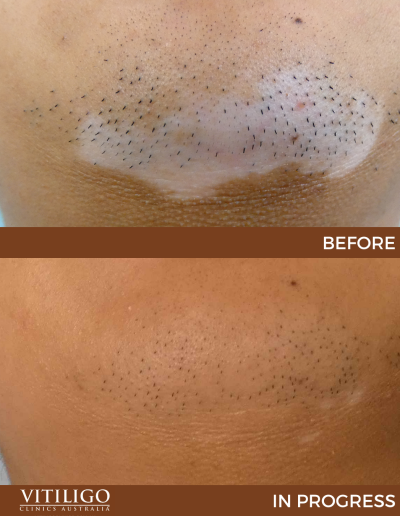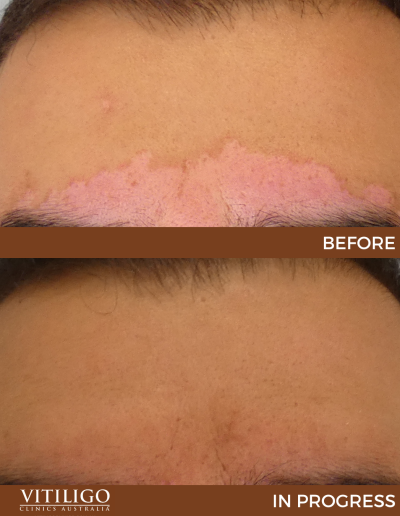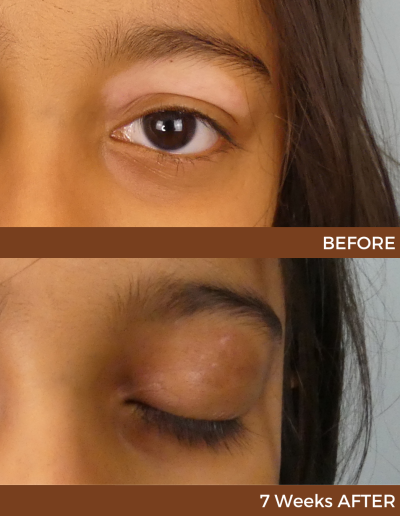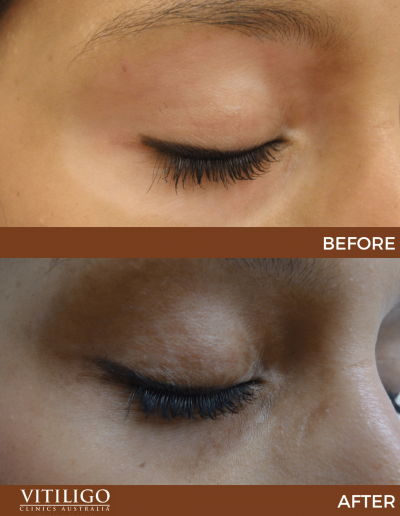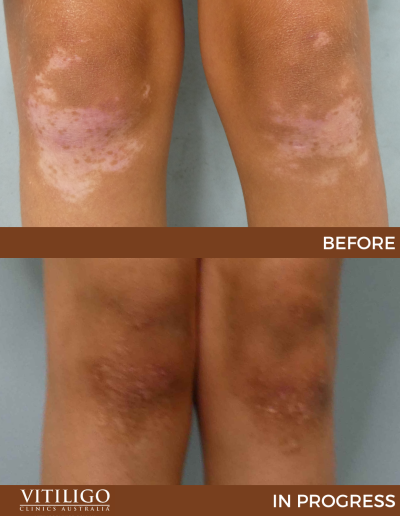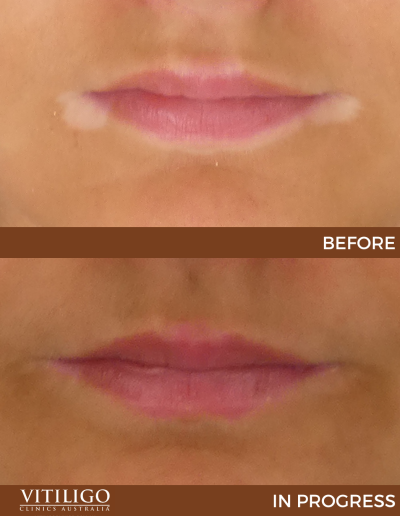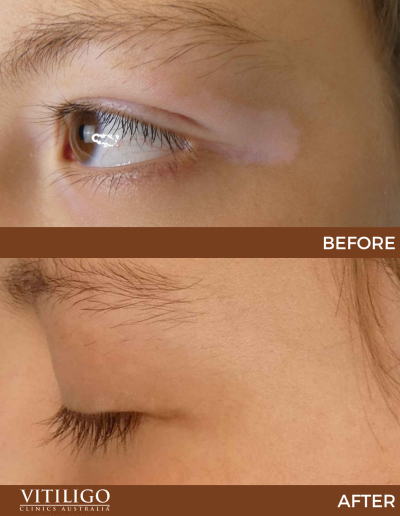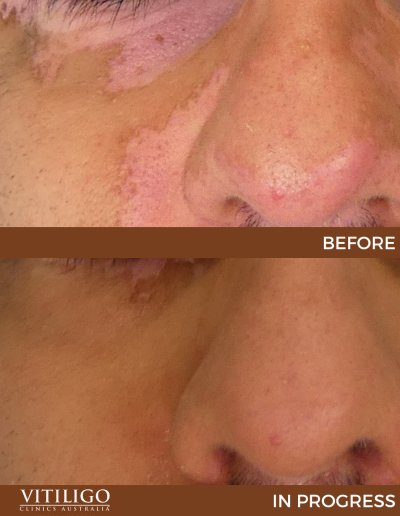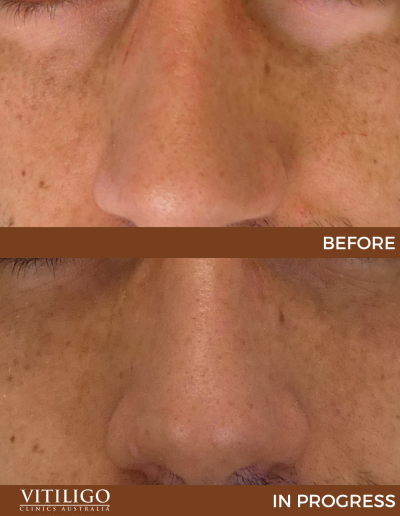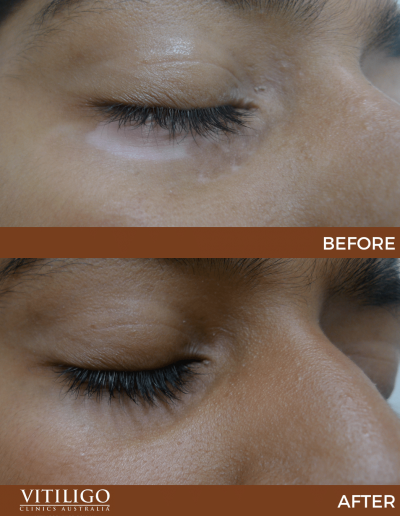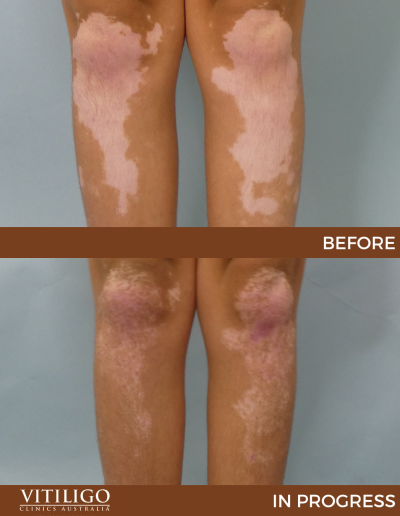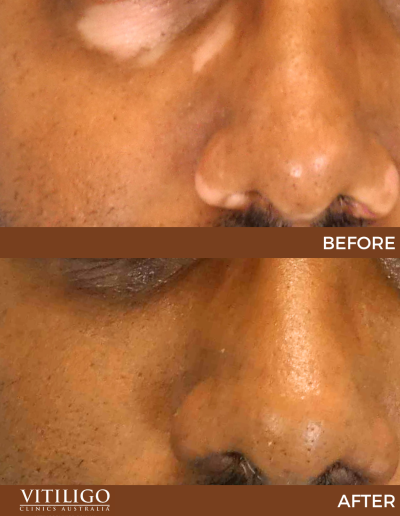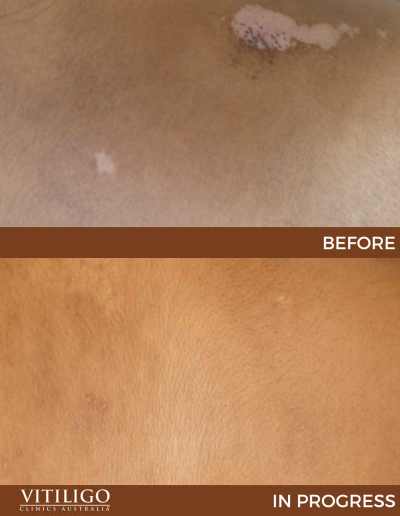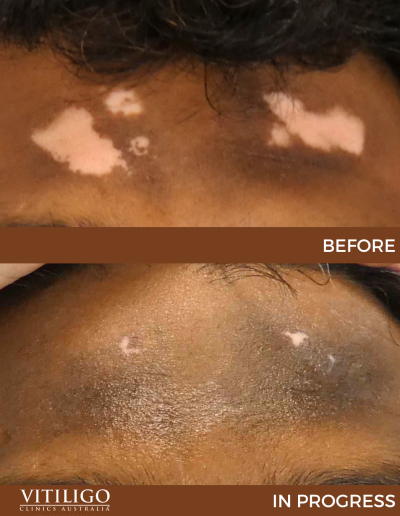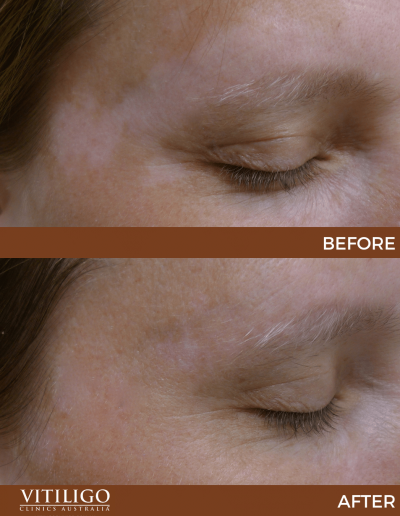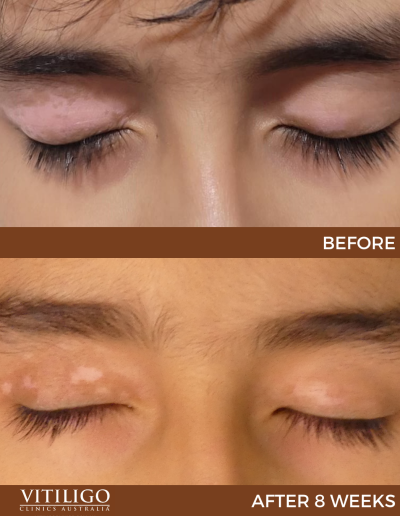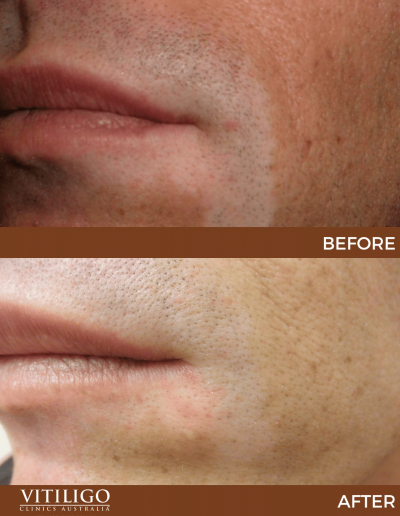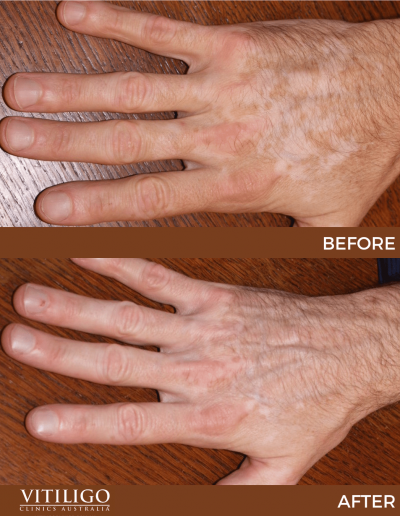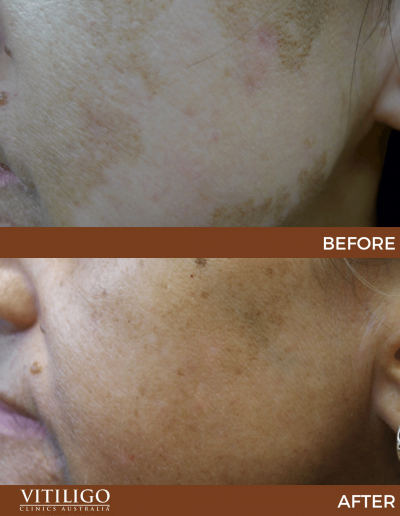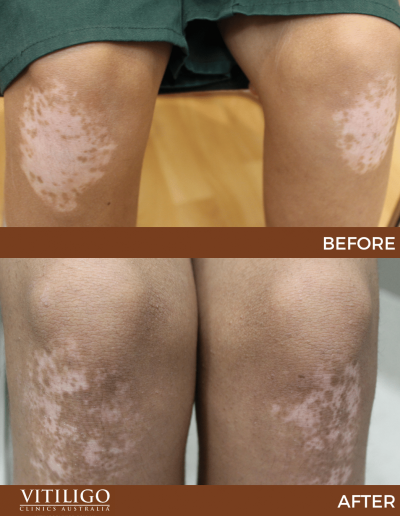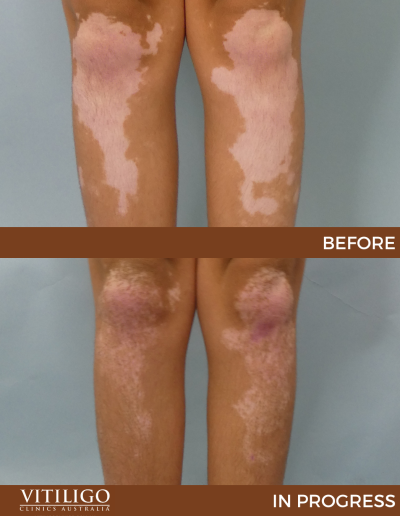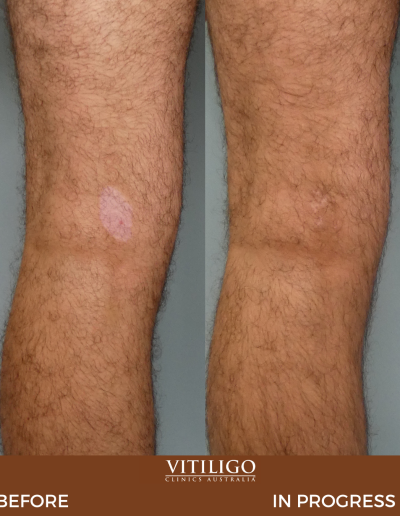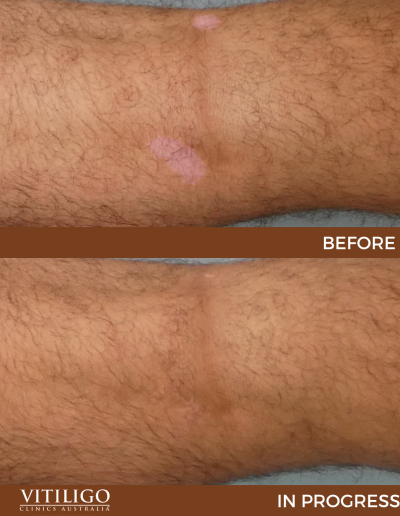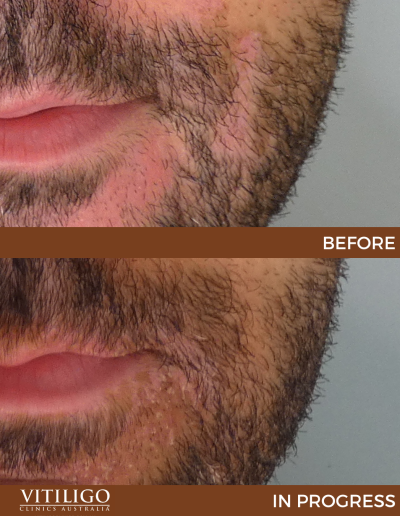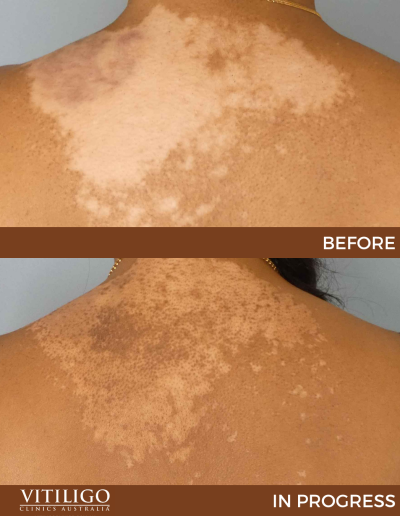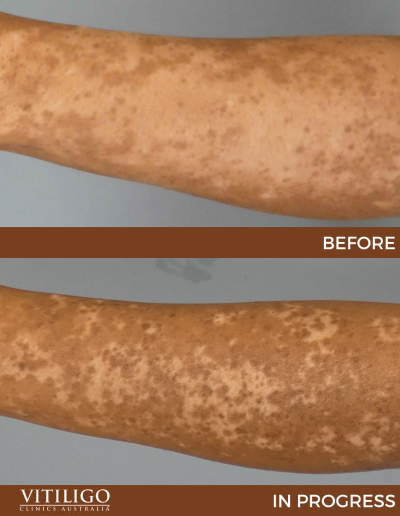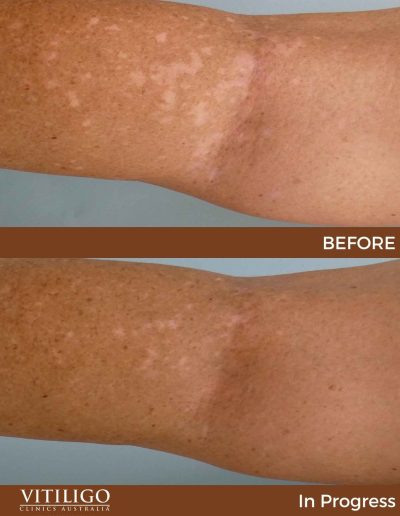Vitiligo, a skin condition characterised by the loss of pigmentation in certain areas, can have a profound impact on an individual’s appearance and self-esteem. The journey to manage and treat vitiligo often involves various interventions, and documenting the progress through before and after treatment images serves as a valuable tool for both patients and healthcare professionals. In this article, we explore the importance of capturing these visual records, shedding light on the transformative power of before and after images in the context of vitiligo treatment.
- Visual Evidence of Progress
Tangible Results:
Before and after treatment images provide tangible visual evidence of the progress made in vitiligo management. Patients and healthcare professionals can witness the transformation of depigmented areas into repigmented skin, showcasing the effectiveness of the chosen interventions.
Motivation and Encouragement:
Seeing tangible results can be a powerful motivator for vitiligo patients. Before and after images serve as a visual timeline, reminding individuals of the progress they have made and encouraging them to stay committed to their treatment plans.
- Personalised Treatment Assessment
Tailored Approaches:
Before and after images enable dermatologists to assess the effectiveness of specific treatments on an individual basis. This personalised approach allows for adjustments to treatment plans based on the patient’s unique response, ensuring the most effective interventions are implemented.
Evidence-Based Decision-Making:
Dermatologists can use before and after images as evidence to support their decision-making process. Analyzing the visual evidence helps determine whether the current treatment approach is yielding the desired results or if modifications are necessary for optimal outcomes.
- Objective Measurement of Repigmentation
Quantifiable Progress:
Before and after images provide an objective means of quantifying the extent of repigmentation. Dermatologists can use these visual records to measure the percentage of repigmented areas, track changes over time, and assess the overall success of the treatment strategy.
Documentation of Changes:
Visual documentation allows healthcare professionals to document changes in vitiligo lesions, capturing variations in size, color, and distribution. This comprehensive documentation enhances the understanding of disease progression and the impact of interventions.
- Building Confidence and Self-Esteem
Psychological Impact:
The psychological impact of vitiligo is significant, and capturing positive changes through before and after images can be a powerful tool in boosting confidence and self-esteem. Witnessing the transformation of depigmented areas fosters a positive self-image and promotes mental well-being.
Empowerment Through Visibility:
Before and after images empower individuals with vitiligo by providing visible proof of their journey toward repigmentation. Sharing these images, with consent, can contribute to breaking societal stigmas and promoting acceptance of diverse skin appearances.
- Informed Patient Decision-Making
Realistic Expectations:
Before and after images contribute to informed decision-making by helping patients set realistic expectations for the outcomes of their vitiligo treatment. Understanding the potential results enhances patient satisfaction and adherence to treatment plans.
Open Communication:
Dermatologists can use visual evidence to facilitate open and transparent communication with patients. Discussing before and after images allows healthcare professionals to explain treatment progress, address concerns, and collaborate with patients on future steps.
- Research and Education
Advancing Medical Knowledge:
Before and after images contribute to the advancement of medical knowledge in the field of vitiligo treatment. Dermatologists can use these visual records for research purposes, furthering our understanding of treatment efficacy, response patterns, and potential innovations.
Educational Resources:
Before and after images serve as valuable educational resources for both healthcare professionals and the general public. Sharing success stories through visual documentation helps raise awareness about vitiligo and disseminate information about effective treatment options.
- Tracking Long-Term Results
Maintenance of Repigmentation:
Capturing long-term before and after images allows healthcare professionals to monitor the maintenance of repigmentation. This ongoing assessment helps identify any potential relapses or the need for additional interventions to sustain positive outcomes.
Adjusting Treatment Plans:
By tracking long-term results, dermatologists can adjust treatment plans as needed, ensuring that interventions remain effective over time. This proactive approach contributes to the sustained success of vitiligo management strategies.
- Quality of Life Assessment
Patient-Reported Outcomes:
Before and after images contribute to the assessment of quality of life for individuals with vitiligo. Patient-reported outcomes, combined with visual evidence of progress, provide a comprehensive understanding of the impact of treatment on daily life and overall well-being.
Holistic Care:
Understanding the holistic impact of vitiligo treatment allows healthcare professionals to tailor interventions to address not only the physical aspects of the condition but also its psychological and social dimensions.
- Documentation for Medical Records
Legal and Ethical Compliance:
Capturing before and after images contributes to legal and ethical compliance in healthcare. These visual records become part of the patient’s medical history, providing a comprehensive documentation of treatment progress and outcomes.
Facilitating Continuity of Care:
Before and after images in medical records facilitate continuity of care. In the event of a change in healthcare providers or the need for collaborative care, these visual records ensure that subsequent professionals are informed about the patient’s treatment journey.
- Fostering Supportive Communities
Community Engagement:
Sharing before and after images within supportive communities can inspire and provide hope to individuals with vitiligo. Positive visual representations contribute to building a sense of community, where individuals share experiences, advice, and encouragement.
Challenging Stigmas:
Visual documentation challenges societal stigmas surrounding skin conditions like vitiligo. By showcasing the positive impact of treatment through before and after images, individuals with vitiligo contribute to changing perceptions and fostering acceptance.
Conclusion
Before and after treatment images play a pivotal role in the comprehensive management of vitiligo. From personalised treatment assessment to building confidence and self-esteem, these visual records serve as powerful tools for both patients and healthcare professionals. The transformative journey captured in before and after images not only illustrates the effectiveness of vitiligo interventions but also contributes to a broader societal shift toward acceptance and understanding of diverse skin appearances. As the field of dermatology continues to advance, leveraging the potential of before and after images remains a valuable strategy in enhancing the overall care and well-being of individuals affected by vitiligo.

